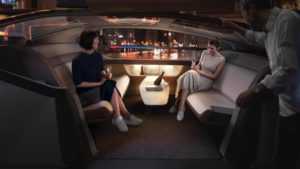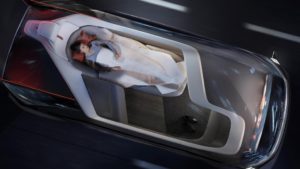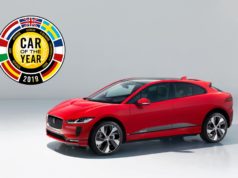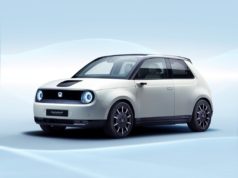Imagine a world in which you travel long distances without the need for airports. A world in which you can avoid airport security, hours of queuing and waiting, and noisy, cramped airliners. What if, instead, you could take your own first-class private cabin that picks you up at home and takes you from door to door?
It is this vision for the future of autonomous travel that Volvo Cars reveals with its new Volvo 360c concept. That is a holistic view of a future of travel that is autonomous, electric, connected and safe. It could open up new growth markets for Volvo Cars, for example in the multi-billion-dollar domestic air travel industry.
The basis of the 360c is a fully autonomous, fully electric car without a human driver. The concept capitalises on the freedom in design afforded by the absence of a steering wheel and a combustion engine. That provides the ability to reimagine the traditional placement of passengers in rows of two or three.

The 360c presents four potential uses of autonomous driving vehicles
These are a sleeping environment, mobile office, living room and entertainment space – which all reimagine the way people travel. It also introduces a proposal for a global standard in how autonomous vehicles can safely communicate with all other road users.
“The business will change in the coming years. And Volvo should lead that change of our industry,” said Håkan Samuelsson, President and CEO of Volvo Cars. “Autonomous drive will allow us to take the next big step in safety, but also open up exciting new business models and allow consumers to spend time in the car doing what they want to do.”
The 360c represents a potentially lucrative competitor to short-haul air travel. That is a multi-billion-dollar industry comprising airlines, aircraft makers and other service providers. Shorter routes where the distance between origin and destination is around 300 kilometres are prime candidates for disruption by an alternative mode of travel.

For example, within the United States, more than 740 million travellers embarked on domestic flights last year
America’s domestic air travel industry is worth billions of dollars in revenue. Several busy domestic air routes, such as New York to Washington DC, Houston to Dallas and Los Angeles to San Diego, are more time-consuming by air than by car when including things such as travel to the airport, security checks and waiting times.
“Domestic air travel sounds great when you buy your ticket, but it really isn’t. The 360c represents what could be a whole new take on the industry,” said Mårten Levenstam, Senior Vice President of Corporate Strategy at Volvo Cars. “The sleeping cabin allows you to enjoy premium comfort and peaceful travel through the night and wake up refreshed at your destination. It could enable us to compete with the world’s leading aircraft makers.”
The 360c also carries implications for the future of travel, city planning, infrastructure and modern society’s environmental footprint. It doesn’t just reimagine how people travel. But it also looks at how people engage with friends and family while on the move. The concept looks also at how people can recapture time while travelling in the cities of the future.
“Autonomous vehicle concepts have a tendency to become a technology showcase instead of a vision of how people use it,” said Robin Page, Senior Vice President of Design at Volvo Cars. “But Volvo is a human-centric brand. We focus on the daily lives of our customers and how we can make them better. The 360c is the next iteration of this approach.”
The 360c is a first yet deliberate step towards a broad discussion about the potential for autonomous driving technology to fundamentally change society in many ways
“When the Wright brothers took to the skies in 1903, they did not have a clue about what modern air travel would look like,” said Mårten Levenstam. “We do not know what the future of autonomous drive will hold, but it will have a profound impact on how people travel, how we design our cities and how we use infrastructure. We regard the 360c as a conversation starter, with more ideas and answers to come as we learn more.”































